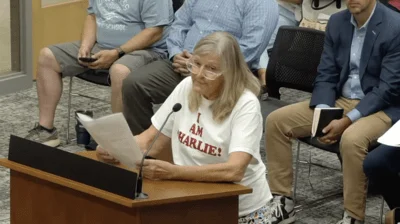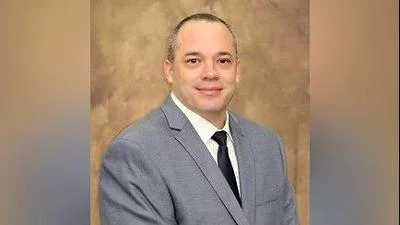Louis Halkias, Chairman of Naperville’s Public Utilities Advisory Board. | Louis Halkias
Louis Halkias, Chairman of Naperville’s Public Utilities Advisory Board. | Louis Halkias
Naperville residents could see their electric bills spike by more than 30 percent if the City Council fails to schedule a vote to renew a critical power contract at its July 15 meeting, according to the chairman of the city’s Public Utilities Advisory Board (PUAB).
Louis Halkias, Chairman of Naperville’s PUAB and a former Environmental Protection Agency agent, has issued a warning that Naperville residents could have significantly higher electric bills if the contract with Illinois Municipal Electric Agency (IMEA) is not renewed, forcing the city to seek energy from other providers such as Commonwealth Edison (ComEd).
“July 15 is a very pivotal meeting because of the fact that The City Council has to make a decision regarding what's going to happen with this IMEA contract,” Halkias told the DuPage Policy Journal.
Halkias noted that while the comments he shared with DuPage Policy Journal on the issue are his own, they are based on facts he gathered during his role as PUAB chairman.
Thanks in large part to its participation with IMEA, Naperville currently pays 20–32% less for electricity than customers of ComEd. And this year, ComEd’s rates jumped 11% due to capacity constraints, while Naperville remained insulated.
If Naperville paid current ComEd prices, it would collectively cost city residents $32 million more per year.
Currently, Naperville residents pay an average of $115.83 per month for electricity—about 20% lower than neighboring communities.
The financial outlook for Naperville becomes even more favorable for staying with IMEA beyond 2035, when the city’s bond debt to the agency will be paid off, potentially triggering a 25% reduction in electric rates.
IMEA is governed by 32 municipal electric systems, including its largest customer, Naperville.
The City Council must vote on whether to include the agreement extension on a future agenda prior to an Aug. 19 renewal deadline. That means that if the City Council were to act on extending its agreement with IMEA through 2055 it would have to do so at the July 15 meeting.
The City of Naperville’s Electric Utility Director, Brian Groth, serves as IMEA’s Vice Chairman.
“28 out of 32 have already signed up to be part of IMEA again with the new contract,” Halkias said. “Winnetka was one of the most recent, and their city council voted unanimously. Naperville uses 30% of the total energy that IMEA distributes, making it the largest city in Illinois in the consortium.”
Despite the high stakes and real costs for residents, Halkias said only three Naperville City Council members have reached out to discuss the PUAB’s findings.
“I will be reaching out to the majority of city council members who have not engaged with the findings of the PUAB and asking people to contact the city council to express that the city should definitely continue its contract with IMEA,” Halkias said.
He said that rather than submitting an official report to the City Council on behalf of the PUAB, he will speak during the public comment section of the July 15 meeting.
He encouraged others to do the same.
The Naperville City Council public hearing is scheduled for July 15, at 7 p.m. in the Council Chambers at the Naperville Municipal Center. Members of the public are invited to attend and provide comments. Each speaker will be limited to three minutes.
The PUAB hosted four public meetings between February and May to evaluate whether the city should stay in IMEA.
The board heard from energy experts, representatives from IMEA and local residents concerned with environmentalist factors before voting 4–3 in April to recommend renewing the contract.
“Part of the PUAB's mission is to provide the most cost-effective, reliable, clean energy we could do,” Halkias said of the PUAB’s vote in recommendation of extending the IMEA contract. “And that's what's happening here.”
Halkias said the PUAB gave those with environmental impact concerns ample time to voice their opinions during public meetings, but ultimately made its recommendation based on the facts the board gathered.
“That was based on facts and science,” Halkias said. “When we go through these kinds of efforts [we] make sure that information is not only irrefutable, but that there will be people that will say, ‘oh no, that's wrong.’ Well then, show me evidence.”
He noted that this effort and PUAB’s vote on recommending the extension of its contract with IMEA was informed by his background as a retired federal investigator with 32 years of experience, including service in the U.S. Environmental Protection Agency.
“I have some experience in this area and in gathering evidence,” Halkias said. “When people say the PUAB didn’t do a good job or whatever, it’s unfortunate because that was the job—to gather evidence or information and to be objective about it. When it comes to a conclusion or position, it’s based on facts and is not biased.”
He said those opposing the PUAB’s recommendation to extend the contract with the IMEA presented “half-truths” and unverified claims about Naperville’s power sources.
“Some things that were presented as facts were not factual or accurate,” Halkias said. “Some were half-truths, which makes it very difficult for people to understand the difference, and they’re swayed.”
The coal-fired Prairie State Energy Campus PSEC in southern Illinois, where IMEA sources much of its power, has drawn scrutiny from climate activists. But Halkias insists the plant’s emissions are heavily regulated and technologically advanced.
“I toured [PSEC] and met with the IMEA people in Springfield,” he said. “I always do it in person to make sure I see exactly what's going on. That power plant, when it was built, had $1 billion invested in pollution control. And when you see the statistics on what comes out of their smokestack, it's basically CO2 with some small percentages.”
IMEA’s coal-powered PSEC plant is among the cleanest coal plants globally and currently produces power at $30/MWh, compared to solar at $80/MWh and wind at $85/MWh.
IMEA’s own Bee Hollow solar project, at $75/MWh, is far more expensive than PSEC and Naperville’s city-owned Springbrook Prairie solar farm, launched in 2021, generates electricity at $76/MWh now and is expected to hit $92/MWh in the future.
Critics note solar and wind power carry hidden environmental costs related to manufacturing and disposing of solar panels and wind turbines, as well as uncertainty over long-term federal subsidies.
Halkias emphasized the need for a gradual transition to cleaner energy sources and pushed back on the argument that IMEA locks Naperville into fossil fuel infrastructure.
“The fossil fuel mix that comes out of PG&E's wires that Commonwealth Edison uses, that we get, is almost the same percentage of fossil fuel mix,” he said. “In other words, the source is from fossil fuel—whether it's coal or natural gas—it’s the same percentage.”
Halkias noted that leaving IMEA would offer no meaningful environmental benefit.
“No one wants to recognize that situation,” he said. “It makes no difference. If we left IMEA, it would make no difference because the electric plant in southern Illinois, Prairie State, will continue to run. What we've done is put the people of Naperville in a financial deficit or bind by leaving IMEA, instead of giving them the cheapest, most cost-effective electricity and cleanest.”
During one of the PUAB’s meetings fellow board member James Fillar echoed this, arguing that leaving IMEA would have “zero-net change to environmental emissions."
IMEA is actively investing in nuclear and solar power as part of its plan to eventually shift entirely to clean and renewable energy sources.
Under the current agreement, Naperville is permitted to source up to 10% of its electricity from clean energy and is on track to achieve 45% clean energy by 2027.
Reaching this target—even while still using some coal—puts Naperville well ahead of Illinois as a whole.
Meanwhile, the State of Illinois has struggled to meet its renewable energy goals, missing every target since they were first set in 2007.
Illinois aimed for 20% renewable energy by 2020, increased that goal to 25% by 2025, and now targets 40% by 2030. However, the state currently generates only about 12% of its electricity from renewable sources.
Halkias cautioned that a haphazard push toward renewable energy, driven largely by environmental activists, is already showing serious drawbacks.
“A perfect example is Spain and Portugal,” Halkias said. “They’re so proud of their whole renewable grid, renewable power grid. It doesn’t work. It doesn’t have the ability and the frequency, the momentum that regular, consistent fossil fuel power provides, or nuclear, and Europe is really cutting their own nose off to spite their face.”
A Spanish government report found that an April blackout affecting over 60 million people was triggered by solar farms shutting down due to negative power prices caused by oversupply. The shutdown led to grid instability across Spain and Portugal, with backup systems failing to prevent widespread outages.
The incident has renewed criticism of heavy reliance on renewable energy and Net Zero policies, despite the Spanish government's continued defense of renewables. Meanwhile, the United Kingdom has also admitted Net Zero is much more expensive than fossil fuels.
Halkias recounted a personal story about his family’s recent experience in Southern California, illustrating the practical impacts of unstable renewable energy systems.
“I have family that was visiting just outside of Los Angeles, Southern California,” he said. “They went out to dinner, and while they were having drinks and hors d'oeuvres, the power went out in the restaurant. The emergency lights came on, the restaurant asked everyone to leave, and they did not receive any payment because the guests didn’t finish what they were doing.”
He added, “My family asked, ‘What the heck happened?’ They said, ‘Oh, this happens all the time.’ It’s become a way of life for these people.”
Halkias warned that Illinois could soon face similar challenges due to legislation promoting renewable energy without adequate transition time.
“It's unbelievable how a certain group of people, and really they're a minority, are getting us to live this way in this world,” he said. “They say, yes, it happens all the time in California. Well, it's going to start happening all the time in Illinois because of legislation that's forcing an emergency.”
He criticized proposals that rely heavily on battery storage, highlighting environmental and cost concerns.
“The environmental side say we have to have batteries,” Halkias said. “That's another expense, another source of pollution to develop. None of these things are carbon-free to make. They’re going to cause an emergency that will lead to more carbon emissions and more energy wasted instead of using the system we have right now that has evolved.”
Editor's note: This story has been updated to reflect that the City Council must vote by July 15 on whether to add an item to a future meeting agenda before the Aug. 19 extension deadline. A previous version stated that such a vote was "expected."






 Alerts Sign-up
Alerts Sign-up